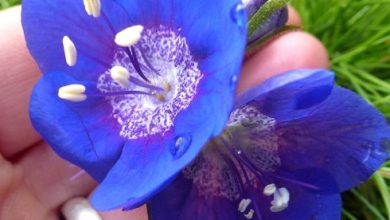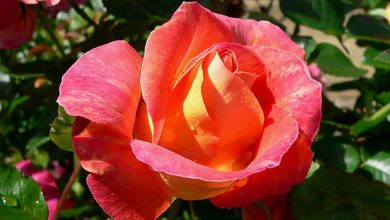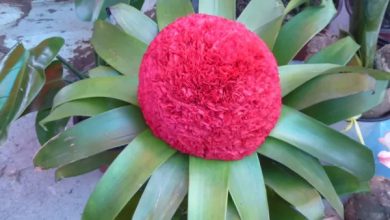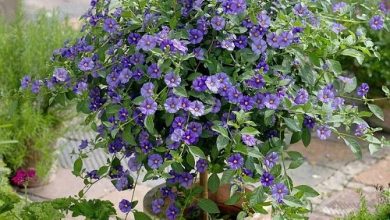15+Amazing Types of Calathea Plants to Grow at Home
The Best Types of Calathea Plants to Grow Indoors
Calathea plants have become some of the most popular houseplants to collect. These plants sprout beautiful foliage that genuinely puts on a show every evening and morning as the leaves fold up at night and unfurl again in the morning. If you’re thinking about adding another houseplant to your indoor garden, consider some of these popular calathea plant types to grow at home.
About Calathea Plants:
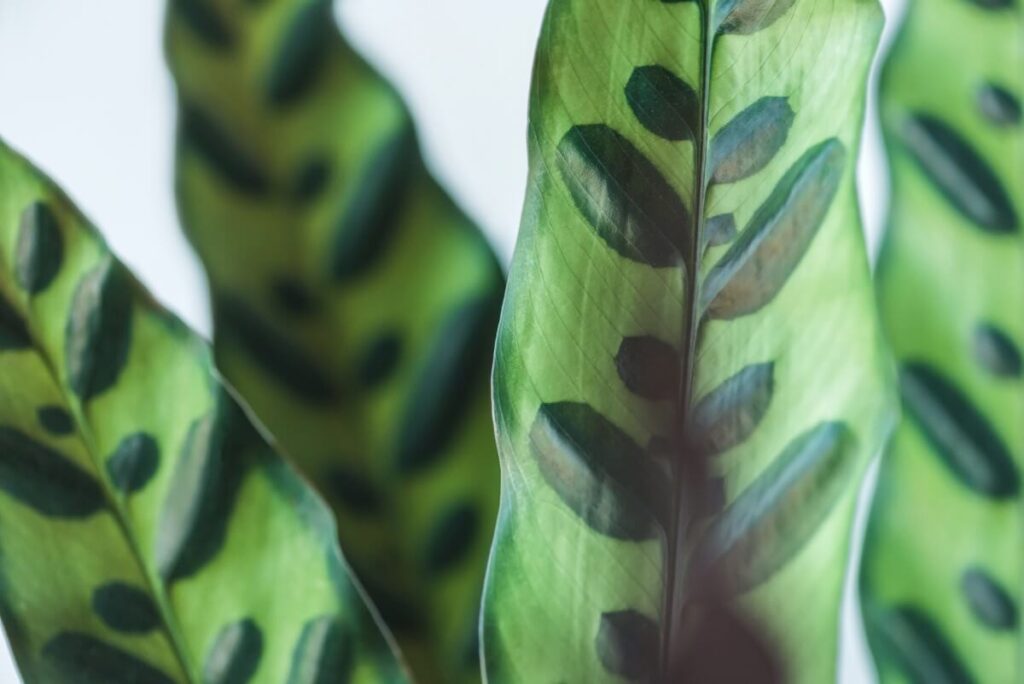
Taxonomy
Calathea is a genus containing about 60 species of flowering plants belonging to the Marantaceae or prayer plant family.
Native Range
Calathea plants grow natively in the tropical regions of the Americas. Calathea plants have many practical uses in their native regions. Their broad leaves are used for basket-weaving, wrapping food, and even for making folded pouches for carrying small items.
Botanical Description
Their leaves are also the primary reason calathea plants have become such popular houseplants. Their foliage is usually quite large and glossy. Additionally, the leaves typically feature bold patterns of green with pink, red, orange, white, or silver variegations. The undersides of their leaves are usually purple, and calathea plants show off this deep color at night when their leaves fold upward like praying hands – hence the common name for many plants in the Marantaceae plant family (prayer plants).
In addition to their attractive foliage, calathea plants (with enough sunlight) can also produce flowers during the summer. They blossom in orange, pink, or white and have three petals, three free sepals, and showy bracts. They’re also relatively easy to propagate.
General Calathea Care
Each species of calathea has slightly different care requirements, depending on its native habitat. Generally, however, most calathea plants fare well with the following care and environmental conditions:
- Light – Calatheas can tolerate some low light, but they fare best in a location that receives bright to medium, indirect, or filtered sunlight. Too much direct light might cause your calathea to develop brown leaves.
- Water – They prefer evenly moist soil. That should be allowed to dry out about halfway between waterings. On average, calathea plants need to be watered about once every one to two weeks. Water more frequently in warm, dry weather and less often in cool, wet weather. Overwatered calatheas typically become limp and droop and may beceom susceptible to pests and diseases.
- Potting Mix – Choose a well-draining, general houseplant potting mix that will hold some moisture without getting soggy while providing plenty of nutrients.
- Container – Calathea plants should be potted in containers that allow excess water to drain. Calatheas typically need repotting every 18 months or so.
- Temperature – Calathea plants thrive in temperatures between 65°F to 85°F. Protect it from cold drafts that could bring the temperature below 60°F and shock the plant.
- Humidity – While they can tolerate average home humidity, calatheas do best in conditions with higher humidity. Place a humidifier near your plant, put your plant on top of a wet pebble tray, or mist the plant regularly to increase the moisture in the air around it.
- Growth Expectations – most calatheas typically top out at 3 feet tall and 2 feet wide when grown indoors. You can prune and cut back old growth in spring and summer each year. These plants also benefit from light fertilizing.
20 Popular Types of Calathea Plants to Grow at Home
Now, let’s take a look at some of the most popular calathea plants to grow at home. Use this list to get to know this species and its many cultivars. From there, you’ll be prepared to choose the perfect addition to your houseplant collection.
1. Calathea lancifolia (Rattlesnake Plant)

This popular species of calathea plant is one of only a few with leaves with ruffled edges. The leaves are bright green, long, and narrow. They feature a striking pattern of deep green dashes that alternate along either side of each leaf’s centerline. The undersides of the leaves are a deep shade of aubergine, and the plant shows off this color when the leaves fold up at night.
Native to Brazil, the rattlesnake plant prefers slightly warmer ambient temperatures (70°F to 85°F) and higher humidity (at least 50%) than other species of calathea. With the right growing conditions, this beautiful plant can grow about 2 feet tall indoors.
2. Calathea roseopicta (Rose-Painted Calathea)

The rose-painted calathea is native to the northwestern region of Brazil. This species gets its common name from the splashes of pink that seem to be painted along the veins of its leaves and the eye-catching hue of the underside of its leaves which is a vibrant and rosy magenta. They look quite similar to the Calatha Medallion as well.
Like many other calathea plants, the rose-painted calathea is not fussy to care for. Provide it with average indoor temperatures, moderate humidity, and bright, indirect sunlight, and you should have a very happy houseplant.
3. Calathea orbifolia

The Calathea orbifolia is a lovely, elegant species with large, silvery striped foliage. It’s also one of the largest calatheas, with leaves that can grow to be more than a foot across.
Native to the rainforests of Bolivia, this species can be a bit more challenging to grow indoors because its large leaves can cause the plant to dry out quickly, becoming brown-tipped, without the proper environment. It’s essential to keep this plant’s soil moist but never soggy and provide it with a high-humidity environment (at least 50%). Ideally, it should be kept at a room temperature of around 70°F in a location that receives medium light and partial shade.
4. Calathea crocata (Eternal Flame Plant)

Like other species of calatheas, the eternal flame plant has attractive foliage with pretty green stripes and dark-purple undersides. This plant, however, is beloved for its stunning blossoms that often stay in bloom for up to three months at a time. The flowers are yellowish-orange in color and have spiky-shaped leaves that make each blossom resemble little flames or torches.
The eternal flame plant is native to Brazil and, as a result, grows healthiest in a warm and humid environment. To ensure your plant blossoms abundantly, ensure it receives plenty of bright indirect sunlight and regular fertilizing with an all-purpose, balanced houseplant fertilizer during the growing season.
5. Calathea musaica (Calathea ‘Network’)

Compared to species with more showy, boldly colored leaves, this species of calathea appears to be slightly understated at first glance. Upon a closer inspection, however, you will notice that the foliage of the Calathea musaica features networks of intricate, interwoven markings of squares and rectangles that look like miniature works of stained glass art – all in various shades of lush green.
Additionally, this calathea is not quite as picky as other varieties regarding care and the environment. That being said, this plant is also native to Brazil and requires warm indoor temperatures and above-average humidity.
6. Calathea bachemiana (Lance Leaf Calathea)

Another calathea plant native to Brazil, the Calathea bachemiana features attractive evergreen leaves that are more lance-shaped than the leaves of other calathea plants. The upper sides of this plant’s foliage are rimmed with dark green and marked with pretty, beanstalk-shaped ladders of a similar shade up their centers.
This species prefers more shade than others and should have shade throughout about half the day and filtered sun the rest of the time. The lance leaf calathea can also tolerate cooler temperatures than other species. So, this is an excellent choice if your house is drafty or you keep it on the cooler side.
7. Calathea lutea (Cigar Plant)
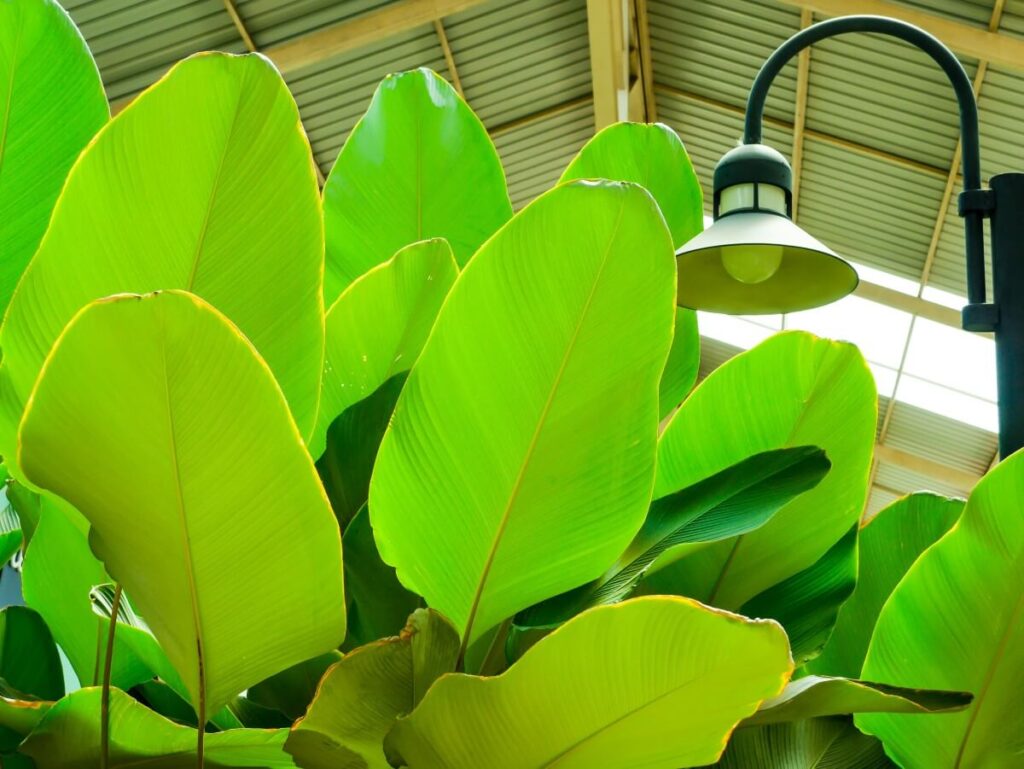
This species of calathea grows upright and tall compared to other calathea plants which are primarily low-growing and more compact. The cigar plant has large, bright-green leaves that, rather than vibrantly colored markings, feature raised veins that give the foliage a lovely, angled texture.
Outdoors, these plants can reach up to about 14 feet in height. Grown indoors, however, their size is more manageable. These calatheas prefer similar growing conditions to others. However, it is vital to provide an overhead growing light or rotate your plant often to prevent the tall stalks from growing at odd angles.
8. Calathea warscewiczii (Velvet Calathea)

This species of calathea has leaves that seem more velvety than glossy, with two-toned green markings and burgundy undersides. The velvet calathea is a larger houseplant. It can grow to be about 4 feet tall and wide at maturity with the right growing conditions.
This calathea is native to the rainforests of Costa Rica and Nicaragua, and it can be slightly tricky to keep healthy in artificial conditions in the home. However, if your temperature is kept above 65°F, you provide it with moderate to high humidity, and you place it in a location that receives medium to bright filtered sunlight, it should do just fine!
9. Calathea rufibarba (Furry Feather Calathea)
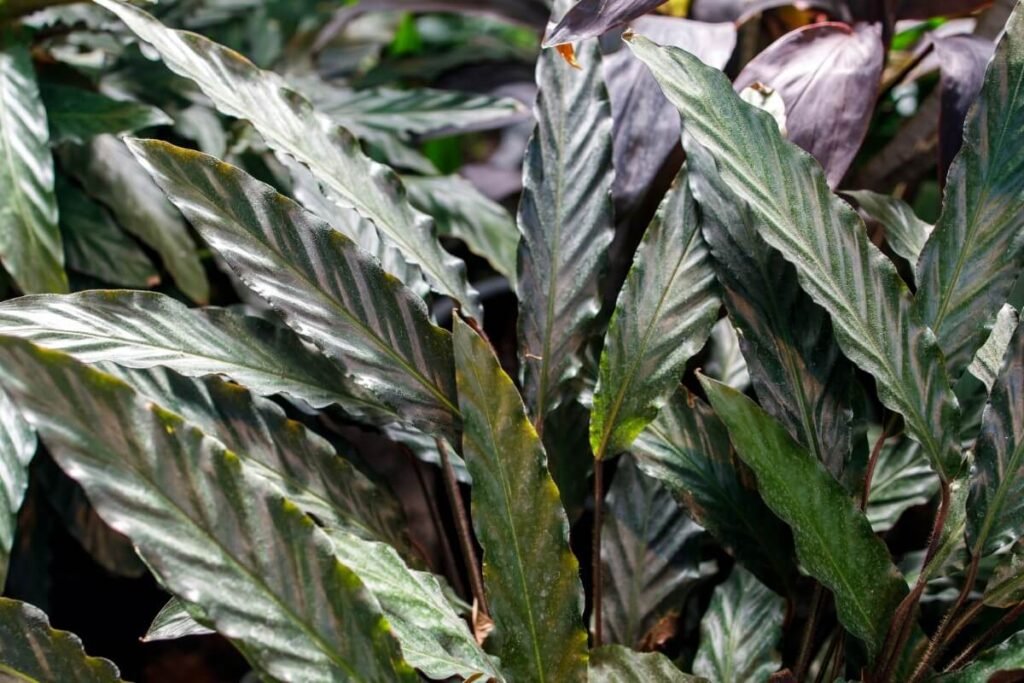
The furry feather calathea gets its common name from the appearance and texture of its leaves which have a pinnate shape with slightly ruffled edges and a fuzzy or furry-feeling underside. The leaves feature the classic calathea purple coloring on their undersides and sublte, green variegated markings on their uppersides.
These plants are native to Bahia in northeastern Brazil and are particularly susceptible to root rot and scorched leaves. Be careful to avoid direct sunlight and not overwater this calathea species.
10. Calathea majestica (White Star Calathea)

The white star calathea is one of the most stunning varieties. If you like ornate foliage, this is the houseplant for you. The large leaves are ovate in shape and feature white stripes that run from the center to the edges of the leaves. More mature plants have vibrant red undersides and sometimes develop blushing splotches of a gentle pink on top of their white stripes.
To keep this plant healthy, create a stable environment with a steadily warm temperature, slightly higher humidity, and lots of indirect sunlight.
11. Calathea crotalifera (Rattle Shaker or Rattlesnake Plant)

This species of calathea gets its name for its flower blossoms which feature two columns of yellow bracts that are stacked side-by-side and very closely resemble the rattle of a rattlesnake’s tail.
These plants are native to South America, Central America, and Mexico, and the primary challenge in their care is providing them with enough sunlight. The rattle shaker plant needs at least 8 hours of bright indirect sunlight every single day. Depending on how far your home is from the equator, these conditions are likely impossible to provide without the help of an artificial grow light.
12. Calathea makoyana (Peacock Plant)

The peacock plant has highly ornate leaves that feature a rim of dark green and alternating brushstrokes in the same color that move from the centerline toward the edge of the leaves against a backdrop of an almost-white shade of green. They have a vibrant purple underside, and mature plants sometimes feature pink uppersides as well.
This calathea can be challenging to acquire and has a reputation for being tough to care for. It does require relatively warm and stable temperatures, high humidity, frequent fertilizing, and just the right amount of indirect sunlight to thrive.
13. Calathea fasciata

This species of calathea is one of the most popular to grow and can usually be found for purchase at most garden centers. Compared to others, this calathea is also relatively easy to care for. However, its looks are just as stunning as some of the more challenging species. Prominent veins striped with a dark green color mark the large, glossy, ovate leaves of the Calathea fasciata.
14. Calathea elliptica (Calathea ‘Vittata’)
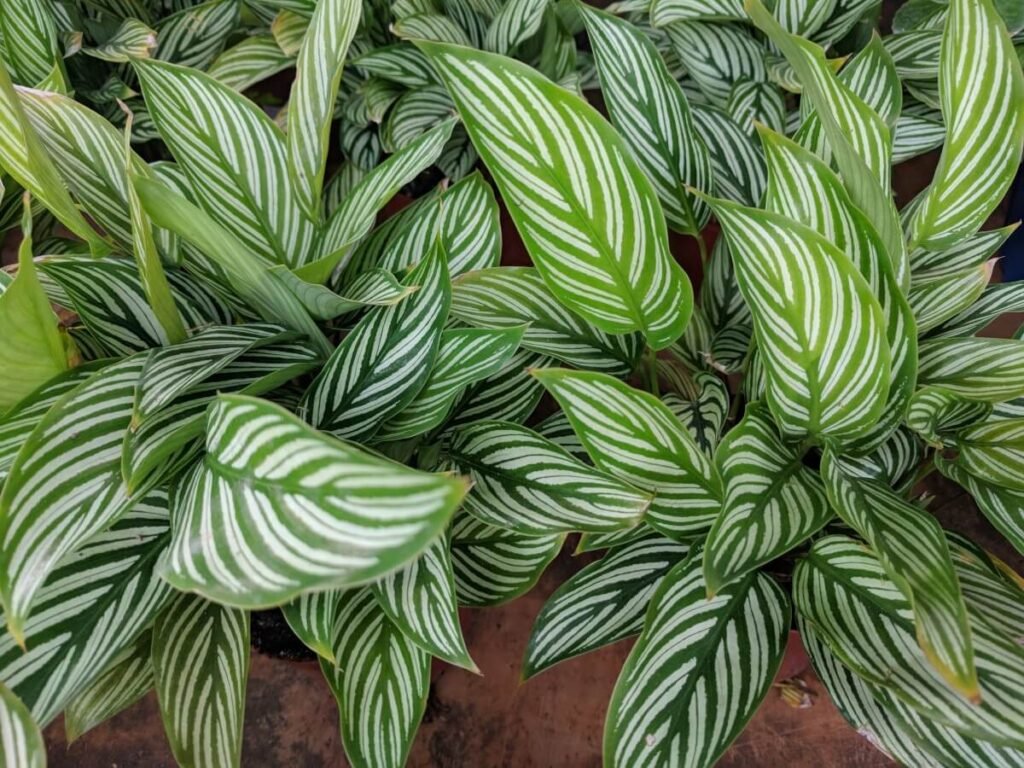
Narrow stripes of white and dark green mark the elliptical-shaped leaves of this calathea species and have an almost marbled appearance with a pattern that has a slight curve and swirl from the center of the leaf toward the outer, upper edge.
This calathea is a highly ornate houseplant, and it can be slightly challenging to care for. It’s particularly susceptible to scorching leaves and root rot. Be careful to keep it in an adequately humid environment, in a well-draining potting mix, and away from direct sunlight.
15. Calathea ornata (Pin-Stripe Calathea)
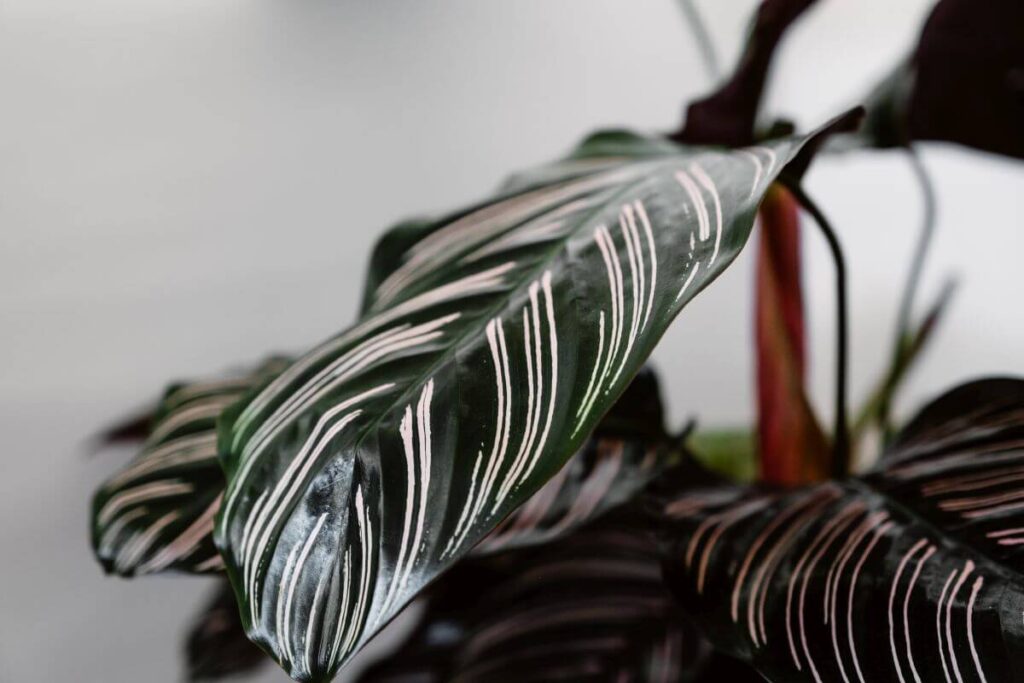
This calathea’s scientific name comes from the Latin word for “ornate,” so it’s not surprising that its leaves are especially beautiful with pin-stripe-like rows in a delicate shade of pinkish-white set against a dark shade of forest green. The undersides of the pin-stripe calathea’s leaves feature a dark shade of burgundy.
While this plant offers a big payoff in terms of beauty, you have to earn it by providing it with a high level of very particular care.
16. Calathea zebrina (Zebra Plant)
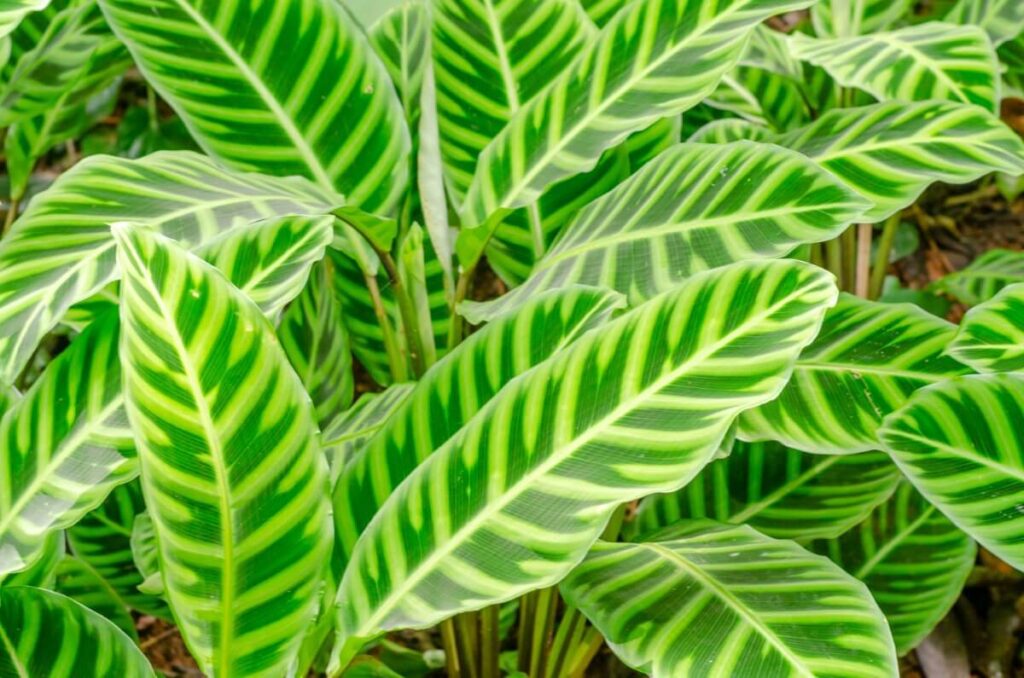
This plant’s ovate leaves feature prominent stripes that can range in color from white or pink to yellow. This calathea can grow to be about 3 to 4 feet tall and wide at maturity.
The zebra plant is native to southeastern Brazil, and it prefers an environment that mimics its natural habitat as closely as possible. This calathea is a bit temperamental and requires high humidity (60-70%), partial shade, and stable, balmy temperatures.
17. Calathea albertii (Albert’s Prayer Plant or White Tiger Calathea)
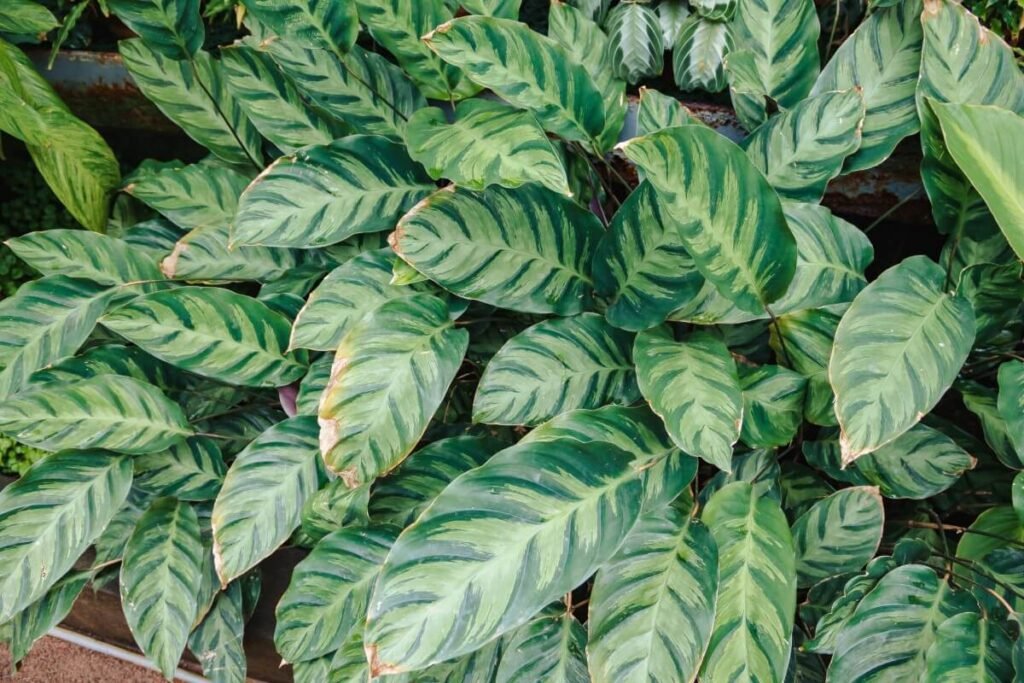
This species of calathea has broad, ovate leaves with a slight ruffle along their edges. Their markings in light, medium, and dark shades of green lend the foliage an attractive, almost watercolored appearance.
Like other calathea plants, the white tiger calathea can be a little fussy and particular about its care and environment, requiring lots of humidity, warm and stable temperatures, and just the right amount of moisture and sunlight.
18. Calathea louisae (Thai Beauty Calathea)
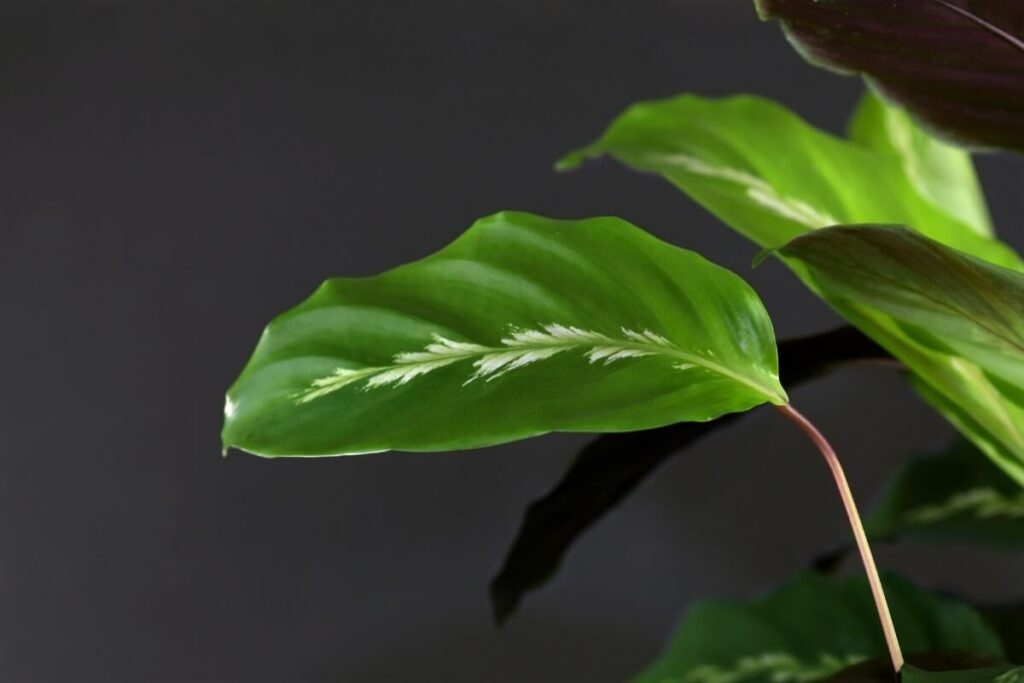
A native to Rio de Janeiro in southeastern Brazil, the Thai beauty calathea’s foliage creates a slightly mesmerizing look. Its striped leaves sprout in a rosette shape with pointed leaves and stripes that make a hypnotizing swirl.
The trick to keeping this species of calathea healthy is all in maintaining the perfect level of moisture in the plant’s soil by creating an equilibrium of a well-draining potting mix, a humid environment, and a frequent watering schedule.
19. Calathea loeseneri (Brazilian Star Calathea)
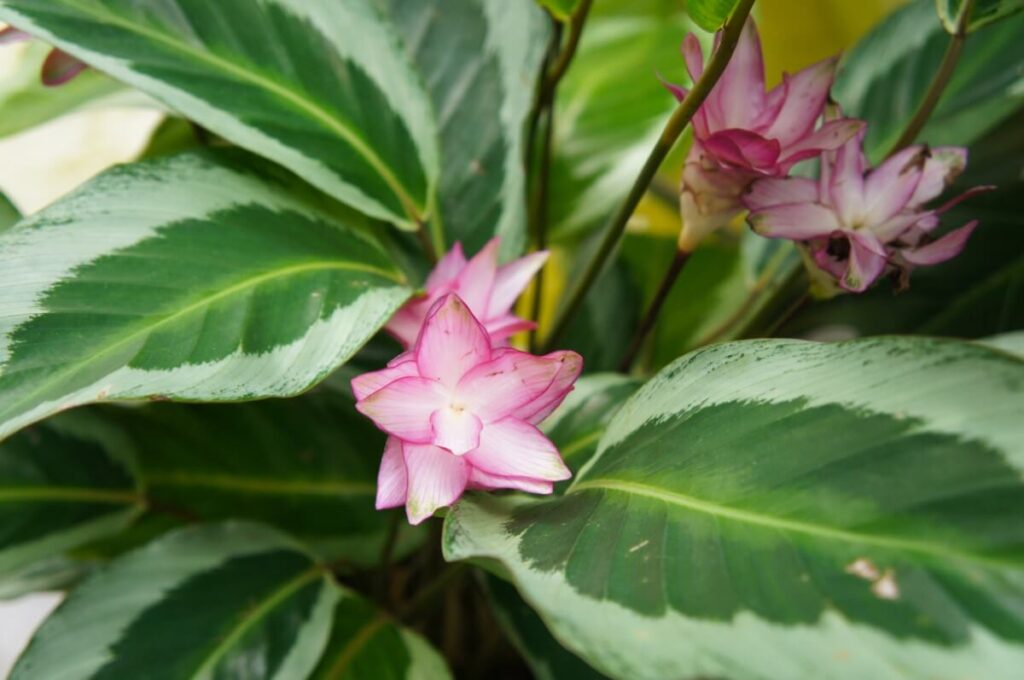
This calathea features lush foliage that is slightly less ornate than other species in the genus. Cultivation of the Brazilian star calathea, however, pays off when the plant blooms. One of only a few calathea species with large, ornate flowers, this species produces lovely, 3-inch, star-shaped blossoms in a delicate shade of light pink which bloom atop tall, spindly stems.
20. Calathea wiotii
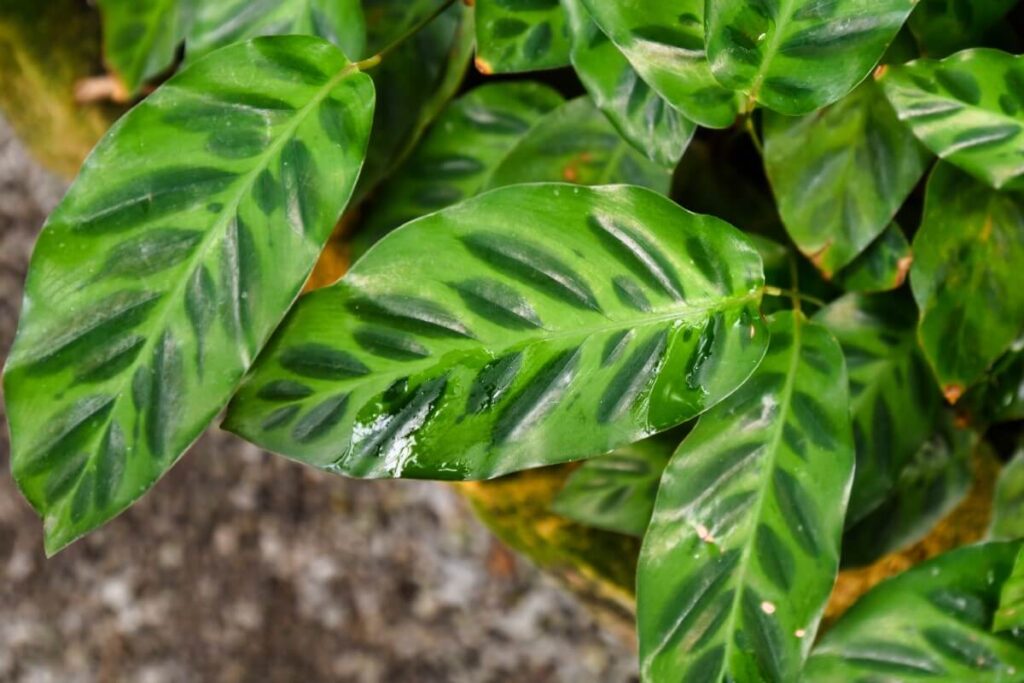
Native to eastern Brazil, this species of calathea is one of few that can tolerate slightly cooler temperatures. Its leaves are broad and ovate and feature alternating dashes or stripes of dark green against a lighter green background.
Like other calatheas, these plants require moderate to high humidity, average indoor temperatures, and a well-draining, sandy, or loamy potting mix.
One Calathea Might Not Be Enough
With so much diversity in one genus of plants, it can be difficult to stop with just one type of calathea. If your home provides the right living environment for these beautiful tropical plants, then you can create a dazzling display of color by grouping all your favorite species of calatheas together.


